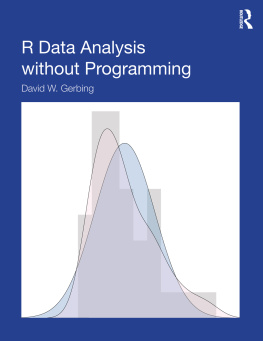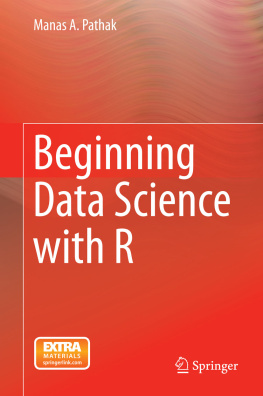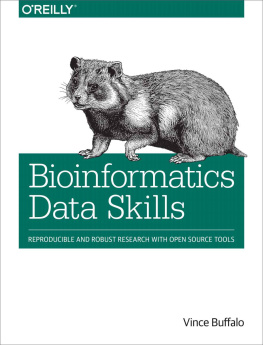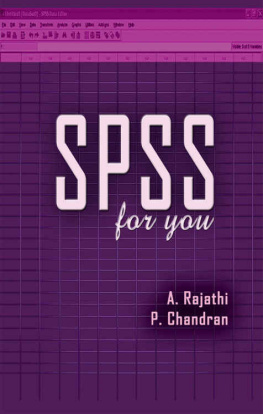SSD FOR R: AN R PACKAGE FOR ANALYZING SINGLE-SUBJECT DATA

Oxford University Press is a department of the University of Oxford. It furthers the Universitys objective of excellence in research, scholarship, and education by publishing worldwide.
Oxford New York
Auckland Cape Town Dar es Salaam Hong Kong Karachi
Kuala Lumpur Madrid Melbourne Mexico City Nairobi
New Delhi Shanghai Taipei Toronto
With offices in
Argentina Austria Brazil Chile Czech Republic France Greece
Guatemala Hungary Italy Japan Poland Portugal Singapore
South Korea Switzerland Thailand Turkey Ukraine Vietnam
Oxford is a registered trademark of Oxford University Press in the UK and certain other countries.
Published in the United States of America by
Oxford University Press
198 Madison Avenue, New York, NY 10016
Oxford University Press 2014
All rights reserved. No part of this publication may be reproduced, stored in a retrieval system, or transmitted, in any form or by any means, without the prior permission in writing of Oxford University Press, or as expressly permitted by law, by license, or under terms agreed with the appropriate reproduction rights organization. Inquiries concerning reproduction outside the scope of the above should be sent to the Rights Department, Oxford University Press, at the address above.
You must not circulate this work in any other form
and you must impose this same condition on any acquirer.
Library of Congress Cataloging-in-Publication Data
Auerbach, Charles.
SSD for R : an R package for analyzing single-subject data / by Charles Auerbach, PhD. &
Wendy Zeitlin, PhD.
pages cm
ISBN 9780199343591 (paperback)
eISBN 9780199343614
1. Social sciencesResearch. 2. Single subject research. I. Zeitlin, Wendy. II. Title.
H62.A8493 2014
001.42dc23
2014000957
To my dear friend and mentor, George Rothbart
To the memory of my grandfather, Harold Landau, who first taught me about probability
And to the memory of Aaron Beckerman
CONTENTS
Single-Subject Research Designs in the Social and Health Sciences
INTRODUCTION
This introduction will provide background information on single-subject research and its use in the social and health sciences. Here you will find a brief history of the use of this type of research design to provide a backdrop for its current use and a discussion of future directions in the use of these. The purpose of this is to provide contextual information for the introduction of SSD for R, a visual and statistical software package that is easily accessible and useful in the analysis of single-subject data. SSD for R is a package written in R, a free and open-source statistical programming language (The R Project for Statistical Computing, n.d.).
DESCRIPTION AND USAGE OF SINGLE-SUBJECT RESEARCH
Single-subject research is also referred to in the literature as n=1 research, interrupted time series research, and single-case research. Single-subject research designs are substantively different from the more commonly published group research designs; instead of examining aggregate data for multiple research subjects simultaneously, single-subject research is concerned with the empirical examination of a single research subject over time. While a single research subject could mean an individual, it could be any subject that could be conceptualized to be a single unit. For example, single-subject research could just as easily use a couple, family, therapeutic group, community, or even a larger population as its unit of analysis.
Single-subject research has some unique characteristics that differentiate it from other types of research designs. First, the most common use of this is in the evaluation of interventions (phase often being used as the control. Therefore, single-subject research is a type of time series in which the series may be interrupted with the introduction or withdrawal of one or more interventions.
Single-subject research, although quantitative, has some of the characteristics of narrative case studies that focus on individuals. Like case studies, single-subject research often contains a detailed description of the subject and, unlike group designs, also contains a detailed description of the intervention or experimental condition (). However, with its inclusion of repeated measures, single-subject research adds a level of methodological rigor often not found in qualitative case studies. To this end, single-subject research falls into the realm of scientific, quasi-experimental research, while narrative case studies are considered pre-scientific (Miller, n.d.).
Unlike other research designs, single-subject research can have two distinct, but equally important, purposes: for formal research such as studies published in peer-reviewed journals and the less formal evaluation of practice. In terms of formal research, single-subject studies have been published in a wide-variety of social science, health, and allied health fields, including social work, psychology, education, speech therapy, rehabilitation medicine, occupational therapy, physical therapy, and physiology. The advantages of utilizing single-subject research designs include the ability to examine problems that are rare or to examine unique client/patient populations ().
With regard to practice evaluation, single-subject research techniques can be used empirically to evaluate client progress over time, simply and dynamically. Techniques used to capture and evaluate client data in order to do this type of analysis are easily learned, inexpensive, simple to implement, and can be built into the normative relationship between clients and practitioners. The benefit to including this type of evaluation into ones practice is the ability to more accurately evaluate client progress longitudinally, which can then be used to inform the practitioners work with individual clients. That is, practitioners can readily evaluate their clients progress over time to adapt their work to meet the individual needs of those they serve.
THE HISTORY OF SINGLE-SUBJECT RESEARCH
Single-subject research has long been part of the repertoire of inquiry in the social and health sciences. Some of the earliest known research using these designs were the physiological studies conducted by Mueller and Bernard in the 1830s ().
In the early to mid-1900s, there was a general shift in research to studying groups instead of individuals. This has been attributed to the development and popularity of group statistical techniques, such as the t-test. Group analysis, then, gained favor as ).
Learning and behavioral analysis, such as the type studied by Skinner, became the forerunner of modern single-subject research designs ().
In the early 1970s, Bergin and Strupp noted the inherent limitations of group research designs. These included the high costs associated with conducting group research, the ethical issues related to assigning subjects to control conditions, the difficulty of applying results from group analyses to individual clients, and the difficulty in explaining why some subjects would improve with treatment, while others did not ().
SINGLE-SUBJECT RESEARCH TODAY
In recent years, the scientific community has again, embraced single-subject research, but it is also growing in relevance due to professional organizations that espouse high practice standards of its membership. For example, in 2008, the Council on Social Work Education (CSWE), the accrediting body of schools of social work in the United States, specifically identified two areas in which single-subject research would be appropriate in its Educational Policy and Accreditation Standards. Standard 2.1.6 states that accredited professional social work programs need to teach students to engage in research-informed practice and practice informed research, and Standard 2.1.10(d) directs programs to teach social workers [to] critically analyze, monitor, and evaluate interventions. (

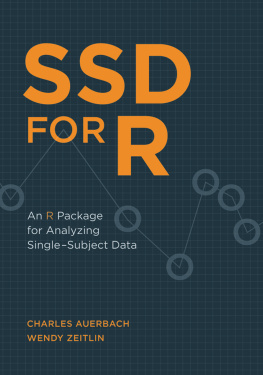



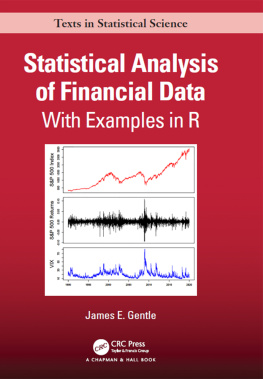
![Thomas Mailund [Thomas Mailund] - Beginning Data Science in R: Data Analysis, Visualization, and Modelling for the Data Scientist](/uploads/posts/book/119629/thumbs/thomas-mailund-thomas-mailund-beginning-data.jpg)

